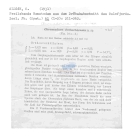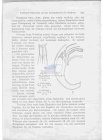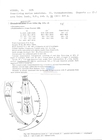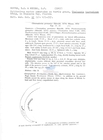
| Intro | | About | | Wiki | | Search traits | | Data explorer | | Literature | | Definitions | | Sources | | Webservices | | Statistics | | Feedback | | Editors | | Log in |
WoRMS taxon detailsChromadorina germanica (Bütschli, 1874) Wieser, 1954
122280 (urn:lsid:marinespecies.org:taxname:122280)
accepted
Species
Chromadora droebachiensis Allgén, 1931 · unaccepted
Chromadora germanica Bütschli, 1874 · unaccepted
Chromadora minor Cobb, 1894 · unaccepted
Chromadorina minor Wieser, 1954 · unaccepted
Heterochromadora germanica Wieser, 1951 · unaccepted
Prochromadorella germanica (Bütschli, 1874) De Coninck & Stekhoven, 1933 · unaccepted (synonym)
marine, fresh
(of Chromadora germanica Bütschli, 1874) Bütschli, O. (1874). Zur Kenntnis der freilebenden Nematoden, insbesondere der des Kieler Hafens. <em>Abhandlungen der Senckenbergischen Naturforschenden Gesellschaft.</em> [details]
Type locality contained in Germany
type locality contained in Germany [details]
Distribution Recorded: North Sea, Mediterranean Sea; Puget Sound, Washington; Florida, New Jersey and Rhode Island; Avenport, Nova Scotia
Distribution Recorded: North Sea, Mediterranean Sea; Puget Sound, Washington; Florida, New Jersey and Rhode Island; Avenport, Nova Scotia [details]
Nemys eds. (2025). Nemys: World Database of Nematodes. Chromadorina germanica (Bütschli, 1874) Wieser, 1954. Accessed through: World Register of Marine Species at: https://www.marinespecies.org/aphia.php?p=taxdetails&id=122280 on 2025-01-15
Date action by
original description
(of Chromadora minor Cobb, 1894) Cobb, N. A. (1894). Tricoma and other nematode genera. <em>The proceedings of the Linnean Society of New South Wales (Second Series).</em> Vol. VIII, 389-421 -With 28 plates. [details]
original description (of Chromadora germanica Bütschli, 1874) Bütschli, O. (1874). Zur Kenntnis der freilebenden Nematoden, insbesondere der des Kieler Hafens. <em>Abhandlungen der Senckenbergischen Naturforschenden Gesellschaft.</em> [details] original description (of Chromadorina minor Wieser, 1954) Wieser, W. (1954). Free-living marine nematodes II. Chromadoroidea. <em>Acta Univ. lund (N.F.2).</em> 50 (16): 1-148. (look up in IMIS) [details] Available for editors original description (of Heterochromadora germanica Wieser, 1951) Wieser, W. (1951). Untersuchungen über die algenbewohnende Mikrofauna mariner Hartböden. I. Zur Ökologie und Systematik der Nematodenfauna von Plymouth. <em>Öst. zool. Z.</em> 3 (3/4): 425-480. [details] Available for editors basis of record De Smet, G.; Vincx, M.; Vanreusel, A.; Vanhove, S.; Vanaverbeke, J.; Steyaert, M. (2001). Nematoda - free living. <em>In: Costello, M.J. et al. (Ed.) (2001). European register of marine species: a check-list of the marine species in Europe and a bibliography of guides to their identification. Collection Patrimoines Naturels, 50.</em> 161-174., available online at https://www.vliz.be/nl/imis?refid=26605 [details] additional source Hopper, B. E. (1969). Marine nematodes of Canada. II. Marine nematodes from the Minas Basin - Scots Bay area of the Bay of Fundy, Nova Scotia. <em>Can. J. Zool.</em> 47(4): 671-690. [details] Available for editors additional source Various Authors (2000). Nematode filing cabinet of the Marine Biology Section Ugent - in combination with the NemasLan Ms-Access database (published on CD-Rom, 2000) (look up in IMIS) [details] additional source Tietjen, J. H.; Lee J. J. (1977). Feeding Behavior of Marine Nematodes. <em>Ecology of Marine Benthos, B.C. Coull.</em> pp. 21-35. [details] Available for editors additional source Moens, T.; Vincx, M. (2000). Temperature and salinity constraints on the life cycle of two brackish-water nematode species. <em>Journal of Experimental Marine Biology and Ecology.</em> 243(1): 115-135. (look up in IMIS), available online at https://doi.org/10.1016/s0022-0981(99)00113-6 [details] Available for editors additional source Vitiello, P. (1985). Structure des peuplements de Nematodes en milieu lagunaire pollué. <em>Actes du 110e congrès national des sociétes savantes fascicule II Extrait Paris cths 1985.</em> [details] Available for editors additional source Zhou, H. (2001). Effects of leaf litter addition on meiofaunal colonization of azoic sediments in a subtropical mangrove in Hong Kong. Journal of Experimental Marine Biology and Ecology, Elsevier, Amsterdam 256(1):99-121. [details] Available for editors additional source Liu, J.Y. [Ruiyu] (ed.). (2008). Checklist of marine biota of China seas. <em>China Science Press.</em> 1267 pp. (look up in IMIS) [details] Available for editors additional source Warwick, R. M. (1971). Nematode associations in the Exe estuary. <em>J. mar. biol. Ass. U. K.</em> 51: 439-454. [details] Available for editors additional source Heip, C.; Herman, R.; Vincx, M. (1983). Subtidal meiofauna of the North Sea: A review. <em>Biol. Jb. Dodonaea.</em> 51: 116-170. (look up in IMIS) [details] Available for editors additional source Van de Velde, B. (2003). Evaluatie en opvolging van een strandverstoringsexperiment met behulp van mariene nematoden. <em>Lic. Thesis UGent.</em> [details] Available for editors additional source Gheskiere, T. (2000). Structurele diversiteit van nematodengemeenschappen van de Bligh Bank (Zuidelijke Bocht van de Noordzee). [details] Available for editors additional source Gheskiere, T., M. Vincx, G. Pison & S. Degraer. (2006). Are strandline meiofaunal assemblages affected by a once-only mechanical beach cleaning? Experimental findings. <em>Marine Environmental Research.</em> 61(3): 245-264. (look up in IMIS), available online at https://doi.org/10.1016/j.marenvres.2005.10.003 [details] Available for editors additional source Integrated Taxonomic Information System (ITIS). , available online at http://www.itis.gov [details] additional source Coomans, A. V. (1989). Overzicht van de vrijlevende nematofauna van België (Nematoda). [The freeliving nematofauna of Belgium: a review.]. <em>In Wouters, K.; Baert, L. (Ed.): Invertebraten van België = Invertébrés de Belgique: Verhandelingen van het Symposium "Invertebraten van België" = Comptes rendus du Symposium "Invertébrés de Belgique" = Proceedings of the Symposium "Invertebrates of Belgium". Brussel, 25-26 november 1988. Koninklijk Belgisch Instituut voor Natuurwetenschappen: Brussel, Belgium.</em> 43-56. (look up in IMIS) [details] new combination reference Wieser, W. (1954). Free-living marine nematodes II. Chromadoroidea. <em>Acta Univ. lund (N.F.2).</em> 50 (16): 1-148. (look up in IMIS) [details] Available for editors ecology source Fonsêca-Genevois, V.da., P.J. Somerfield, M.H. Baeta-Neves, R. Coutinho & T. Moens. (2006). Colonization and early succession on artificial hard substrata by meiofauna. Marine Biology 148(5):1039-1050., available online at https://doi.org/10.1007/s00227-005-0145-8 [details] Available for editors ecology source Soetaert, K.. M. Vinckx, J. Wittoeck & M.Tulkens. (1995). Meiobenthic distribution and nematode community structure in five European estuaries. <em>Hydrobiologia.</em> 311: 185-206. (look up in IMIS) [details] Available for editors  Present Present  Present in aphia/obis/gbif/idigbio Present in aphia/obis/gbif/idigbio  Inaccurate Inaccurate  Introduced: alien Introduced: alien  Containing type locality Containing type locality
Unreviewed
Diet bacteria, fungi and other nematodes [details]Dimensions Length: male 0.77 mm; Maximum width: 29-31 u; Head: 11-12 u wide [details] Distribution Recorded: North Sea, Mediterranean Sea; Puget Sound, Washington; Florida, New Jersey and Rhode Island; Avenport, Nova Scotia [details] Habitat free-living or bottom dwelling [details] Importance useful in determining environmental quality [details] Reproduction separate sexes; fertilization internal, eggs may be retained until hatching. Young appear as juvenile worms (not larvae). [details]
Original description (NemasLan)
Original description (NemasLan) To Biodiversity Heritage Library (3 publications) To European Nucleotide Archive, ENA (Chromadorina germanica) To GenBank (5 nucleotides; 0 proteins) To PESI To USNM Invertebrate Zoology Nematoda Collection (5 records) To ITIS |







